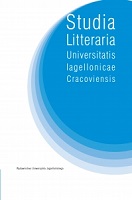Mélancolie, illusion diabolique et création poétique
Melancholy, Diabolical Illusion and Poetic Creation
Author(s): Marianne ClossonSubject(s): Health and medicine and law, 16th Century, Theory of Literature
Published by: Wydawnictwo Uniwersytetu Jagiellońskiego
Keywords: devil; illusion; genius; dream; artist; witchcraft;
Summary/Abstract: The sixteenth century inherited three discourses on melancholy: the medical, philosophical, and religious ones. While the first presented it as a mental illness linked to a disorder of the humours, the second, with the rediscovery of Aristotle’s Problem XXX, saw it as a sign of creative genius, and the third reminded us that it was, according to Saint Jerome’s expression, the balneum diaboli; it allowed Satan to take possession of the patient’s mind, causing him to hallucinate. So how can we distinguish the melancholy of the genius from the pathology of the same name, especially when the latter is associated with the devil? The devil’s ability to create illusory worlds on the border between dream and reality coincides with Renaissance artists’ works populated by ghosts, monsters, witches and demons. Could not these scenes, presented both as manifestations of the devil and projections of the hallucinated mind, be linked to the figure of the melancholic artist?
Journal: Studia Litteraria Universitatis Iagellonicae Cracoviensis
- Issue Year: 17/2022
- Issue No: 2
- Page Range: 61-73
- Page Count: 13
- Language: French

